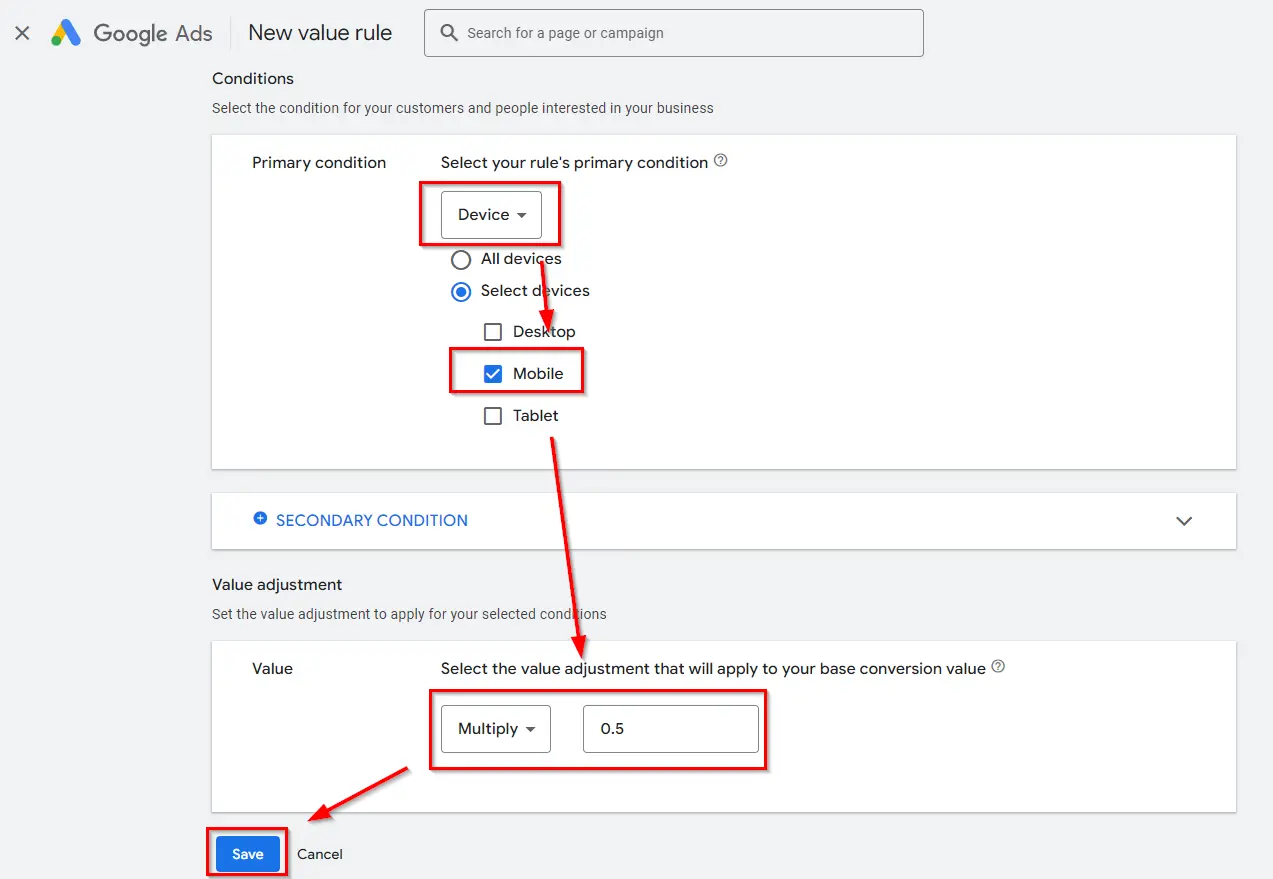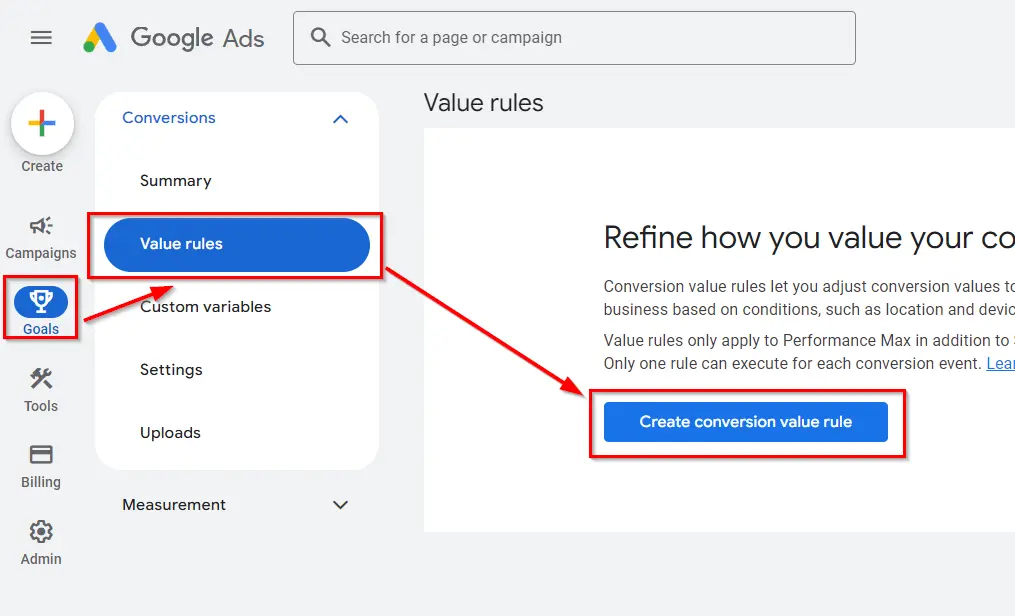How to Exclude Mobile Devices and Apps in PMax Campaigns

It's important to note that completely excluding mobile devices from Performance Max campaigns is not currently supported. Performance Max campaigns are designed to run across all of Google's channels, including Search, Display, YouTube, Discover, Gmail, and Maps. This broad reach can be valuable for many businesses, but it can also mean that your ads are shown on devices that may not be ideal for your specific goals. For example, if you sell products or services that are best viewed or accessed on a larger screen, you might want to limit how often your ads appear on mobile devices.
While complete exclusion isn't an option, there are several strategies you can use to reduce mobile traffic and prioritize desktop users in your PMax campaigns.
1. Adjust Conversion Values
One effective way to reduce mobile traffic is to adjust the conversion values for mobile devices. This involves using a 'value rule' to reduce the value assigned to conversions that originate from mobile devices. By doing this, you send a signal to Google Ads that those conversions are less valuable to your business. Over time, the smart bidding strategy within PMax will learn to prioritize desktop traffic, as conversions from those devices will be weighted more heavily.
Here's a step-by-step guide on how to create a value rule in Google Ads:
- Go to Goals > Conversions > Value rules.
- Click the plus or "Create conversion value rule" button to create a new value rule.
- Select Device as the condition.
- Select Mobile as the device type.
- Enter a multiplier of less than 1 (e.g., 0.5). This will reduce the value of mobile conversions by half.
- Save the value rule.


This adjustment doesn't completely block mobile devices, but it encourages Google Ads to prioritize showing your ads to users on desktops and other devices with larger screens.
2. Focus on Desktop-Optimized Assets
Another approach to minimize mobile traffic is to prioritize desktop-optimized assets in your PMax campaigns. This means using high-quality images and videos that are designed to be viewed on larger screens. You can also use longer headlines and descriptions that are more likely to be read on a desktop computer.
By focusing on desktop-optimized assets, you can make your ads more appealing to desktop users and less appealing to mobile users. This can help to reduce mobile traffic without having to completely exclude mobile devices.
3. Exclude Mobile Apps
If you're concerned about your ads appearing within mobile apps, you can exclude mobile apps at the account level. This will prevent your ads from being shown in any mobile apps, across all campaigns in your account.
To exclude mobile apps, follow these steps:
- Make sure campaign selection is All Campaigns.
- In the navigation menu, under the Audiences, Keywords and content, click Content.
- Find the Exclusions table on the right and click Edit exclusions button.
- Select Account from the drop-down menu.
- Go to App categories.
- Expand the Apple App Store and Google Play sections.
- Manually select all of the app categories to exclude them.
- Save your changes.


Keep in mind that this is a broad exclusion and will apply to all campaigns within your account.
4. Use Other Campaign Types
If you require more granular control over device targeting, consider using other campaign types like Search or Display campaigns. These campaigns offer more precise device targeting options, allowing you to completely exclude mobile devices if needed.
However, it's important to understand that PMax campaigns are designed to be more automated than other campaign types. This automation is intended to optimize performance across all channels and devices, which is why it limits manual device exclusions4. If you're not comfortable with this level of automation or require stricter control over device targeting, Search or Display campaigns might be a better fit.
5. Choosing the Right Approach
The most effective approach for managing mobile traffic in your PMax campaigns depends on your specific business goals and the nature of your conversions.
- Adjusting conversion values is a good option if you want to subtly shift traffic away from mobile without completely excluding it. This can be useful if you have some valuable mobile conversions but want to prioritize desktop users.
- Focusing on desktop-optimized assets is a good strategy if you want to make your ads more appealing to desktop users. This can be particularly effective if your products or services are best experienced on a larger screen.
- Excluding mobile apps is a useful tactic if you're seeing poor performance from mobile app placements or if you want to avoid showing your ads in certain app categories.
- Using other campaign types might be necessary if you need complete control over device targeting or if you're not comfortable with the level of automation in PMax campaigns.
Consider your priorities and the level of control you need when choosing the best approach for your PMax campaigns.
6. Recent Updates to PMax and Device Targeting
Google has been actively updating Performance Max campaigns to provide advertisers with more insights and control. Some recent updates relevant to device targeting include:
- Enhanced performance insights: Google Ads now offers more detailed insights into PMax campaign performance, including data on audience segments and conversion paths. This information can help you understand how different devices contribute to your overall campaign goals.
- Improved audience insights: You can now access more granular data about your audience segments, such as their share of conversions and conversion-based index. This can help you identify which audience segments are most valuable on different devices.
By leveraging these insights, you can make more informed decisions about device targeting in your PMax campaigns. Stay updated on new features and reports within Google Ads to further refine your strategies.
7. Submit a Performance Max Modification Request Form
For more specific adjustments, such as excluding certain placements or keywords from individual PMax campaigns, you can submit a Performance Max Modification Request Form to Google. This provides a way to request more granular changes that are not available directly within the Google Ads interface.
8. Conclusion
While Performance Max campaigns offer valuable automation and broad reach, they do come with limitations in terms of device targeting. Complete exclusion of mobile devices is not currently possible, but the workarounds outlined in this article provide effective ways to manage mobile traffic and prioritize users on other devices. By adjusting conversion values, focusing on desktop-optimized assets, excluding mobile apps, or using other campaign types, you can tailor your PMax campaigns to better align with your business goals.
It's crucial to adapt your strategies based on your specific needs and stay informed about any changes to Google Ads policies regarding PMax and device exclusions. Regularly reviewing your campaign performance and utilizing the latest insights provided by Google Ads can help you optimize your campaigns for the best possible results.
